Recent Animal Release Feb – Mar 2016
Collared Crow (Corvus torquatus)

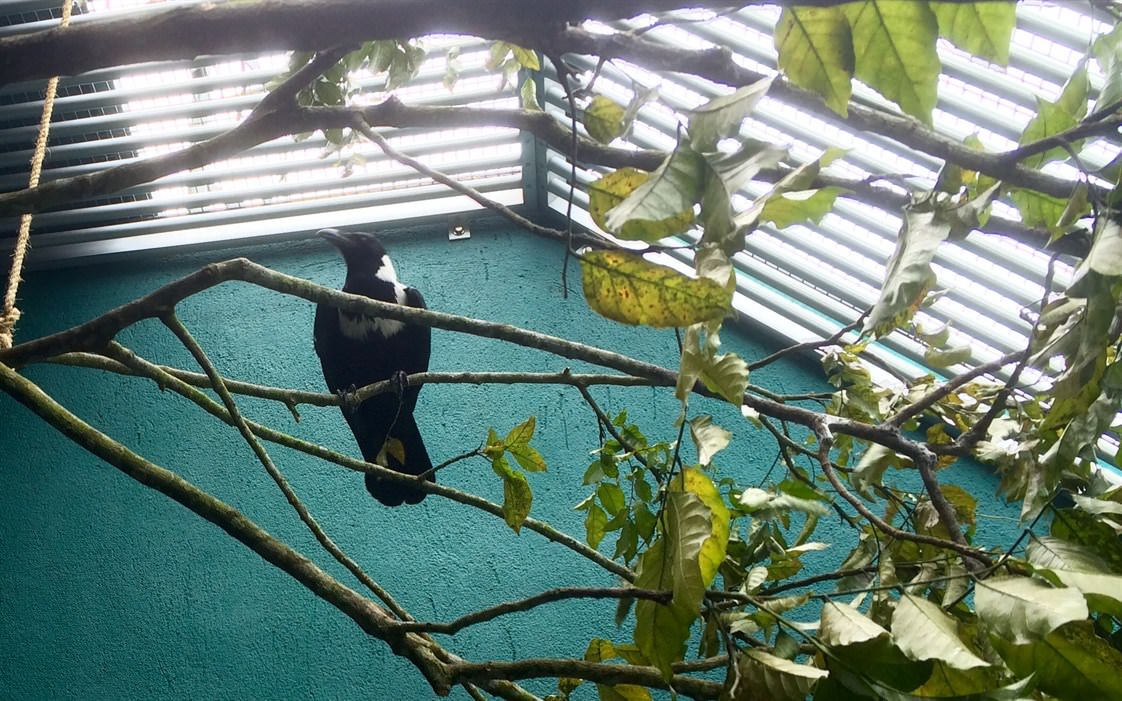
After the tangled kite line removed, the crow was moved to a larger enclosure with more exericse space
The Collared Crow was the first animal received by KFBG Wild Animal Rescue Centre in 2016. It was discovered unable to fly at Sai Kung Police Station and was passed to the Rescue Centre for veterinary treatment on 1 January. The crow appeared healthy , but it was entangled with kite line. After removing all the kite line, it was moved to a larger enclosure to exercise and prepare for the release. Following an earlier request, a DNA sample was collected from the bird and sent to the University of St Andrews, Scotland for molecular phylogeny study.

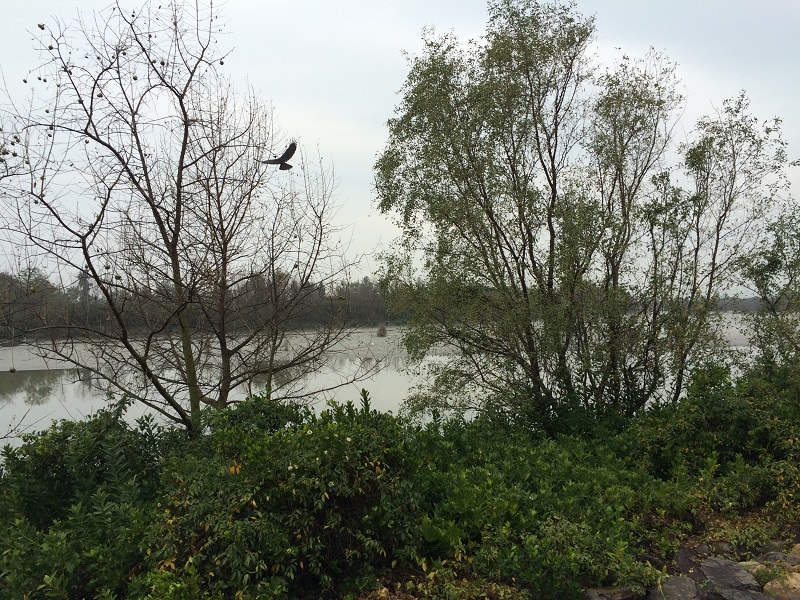
The Collared Crow was released on 22 February at Nam San Wai
The Collared Crow is native to Southern China, Hong Kong and Northern Vietnam. It is fairly common in Hong Kong and can be found around Deep Bay and Mai Po. However, it is undergoing a decline in numbers across its range in southern China due to prey depletion and overuse of pesticides. This species was formerly classified as Least Concern by the IUCN, but more updated research has shown rapid decline of its population and it was uplisted to Near Threatened in 2008.
Blue and White Flycatcher (Cyanoptila cyanomelana)
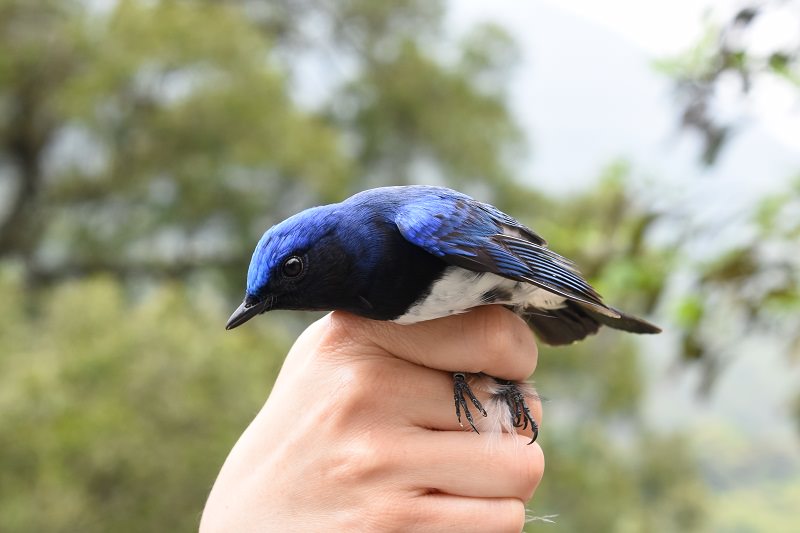
On 26 March 2016, a Blue and White Flycatcher accidentally flew inside the Tsuen Wan West Rail Station and was unable to find its way out. The Society for the Prevention of Cruelty to Animals (SPCA) was called out to rescue the flycatcher which was the passed to the Rescue Centre. After a general health check, the bird was found to be in good condition. It was released on the hillside at KFBG after a short stay at the Rescue Centre.
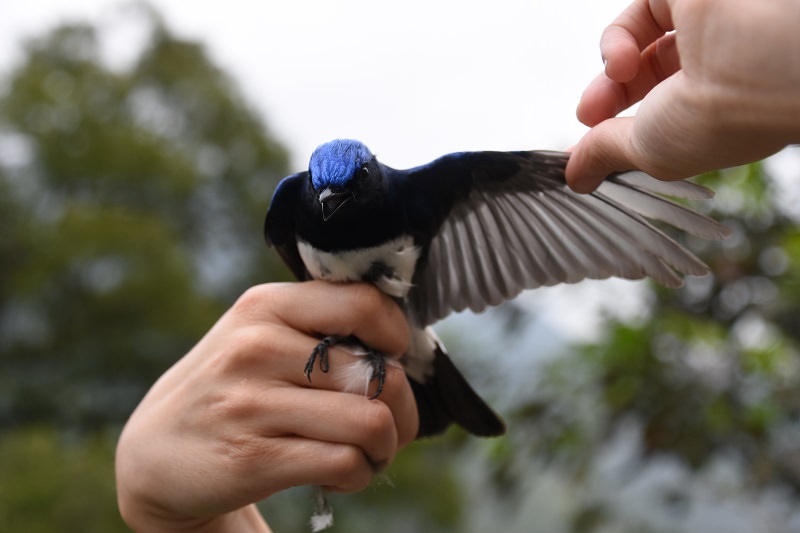
In Hong Kong, the Blue and White Flycatcher is a spring and autumn passage migrant. Individuals can been seen in March and April, as well as, from September to November. This was the first Blue and White Flycatcher we have ever received at the Rescue Centre!
Leopard Cat (Prionailurus bengalensis)
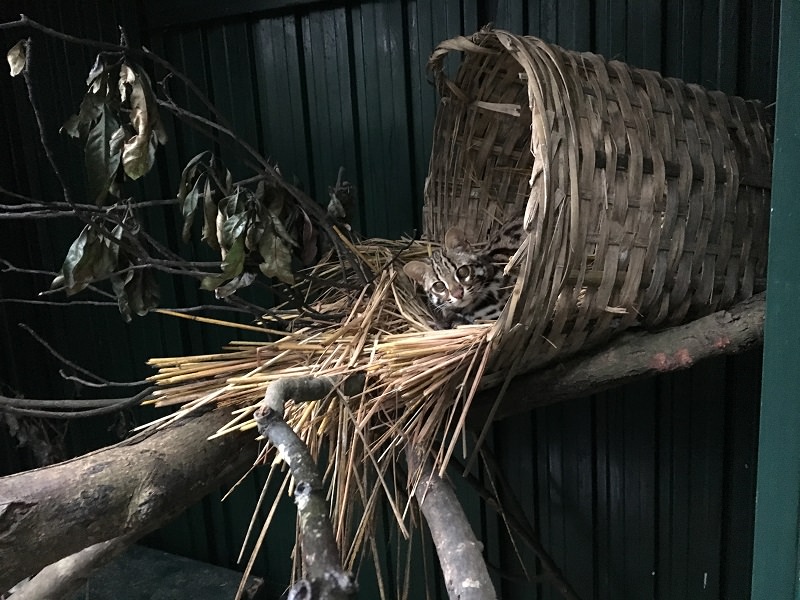
On 14th January 2016, the Rescue Centre received a female juvenile Leopard Cat from the SPCA. On arrival, it was a little underweight. It was temporarily retained at the Rescue Centre for rehabilitation. We observed her behaviour and physical fitness for almost 2 months to make sure she was suitable for wild release.
AFCD staff were interested in radio tracking the post release route of the Leopard Cat. It was attached with a transmitter collar and moved to the soft release cage on the hillside on 30th March. An infra-red camera was set up to record the time when it moved out of the cage. It exited the cage at 5:54pm on the same day. The next morning, radio signals were received from the western side of KFBG.
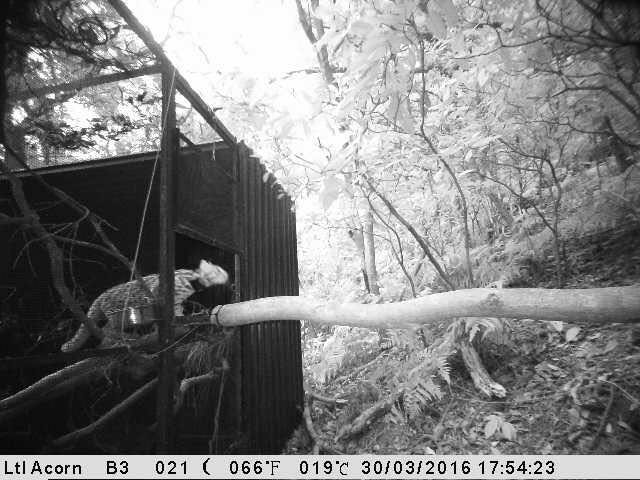
The Leopard Cat has a wide distribution in Hong Kong, but sightings of this species are not common due to its nocturnal habit. In Hong Kong, it is protected under Cap 170 of the Wild Animal Protection Ordinance and it is also listed on CITES Appendix II which controls the international trade of the species.

